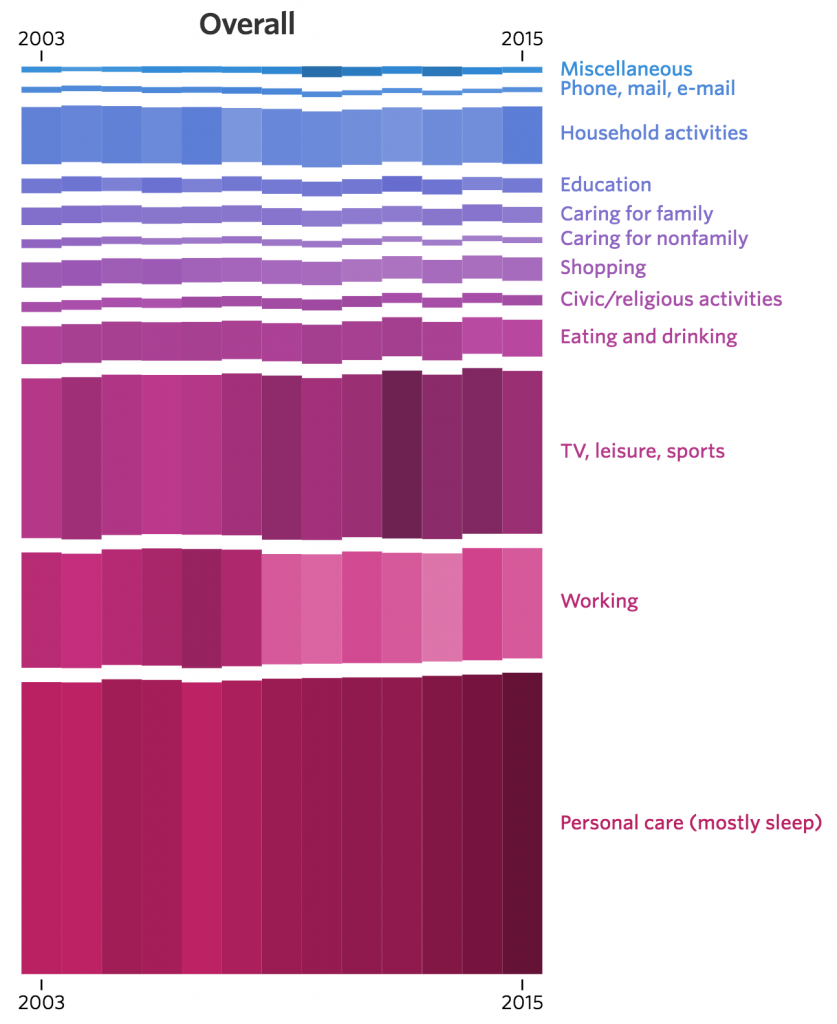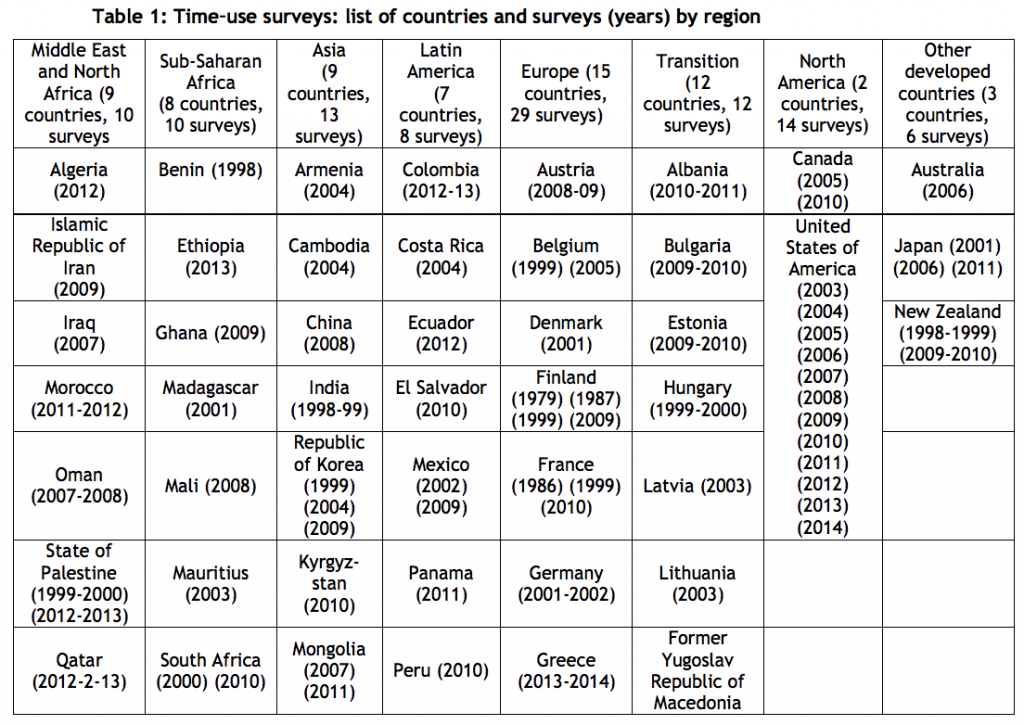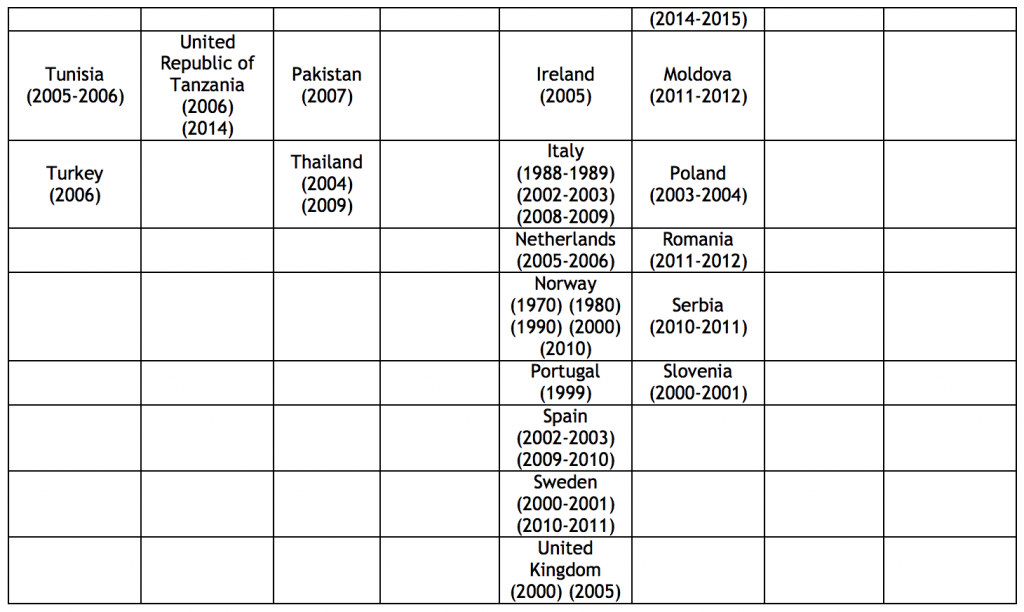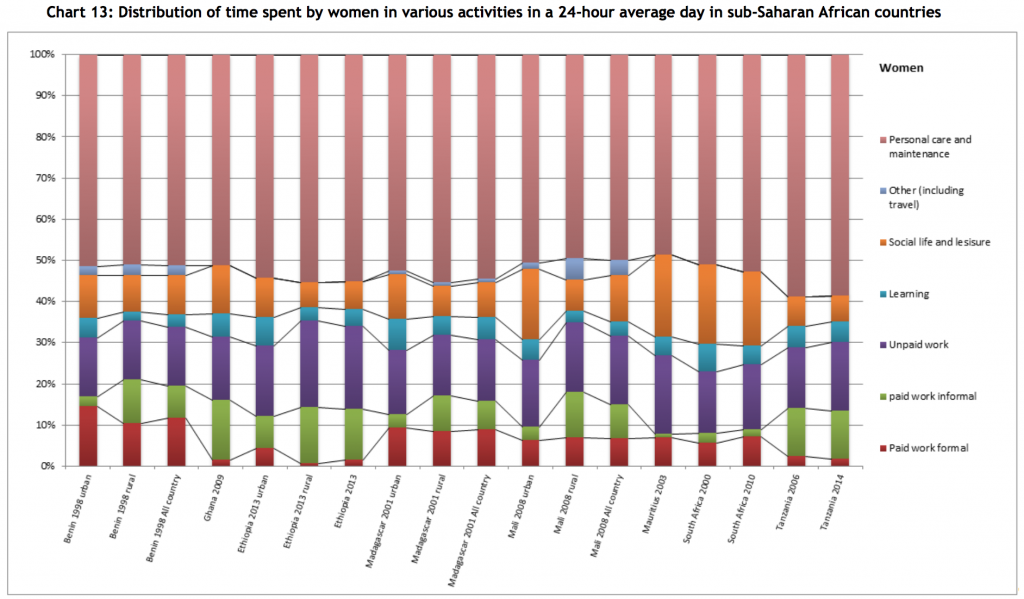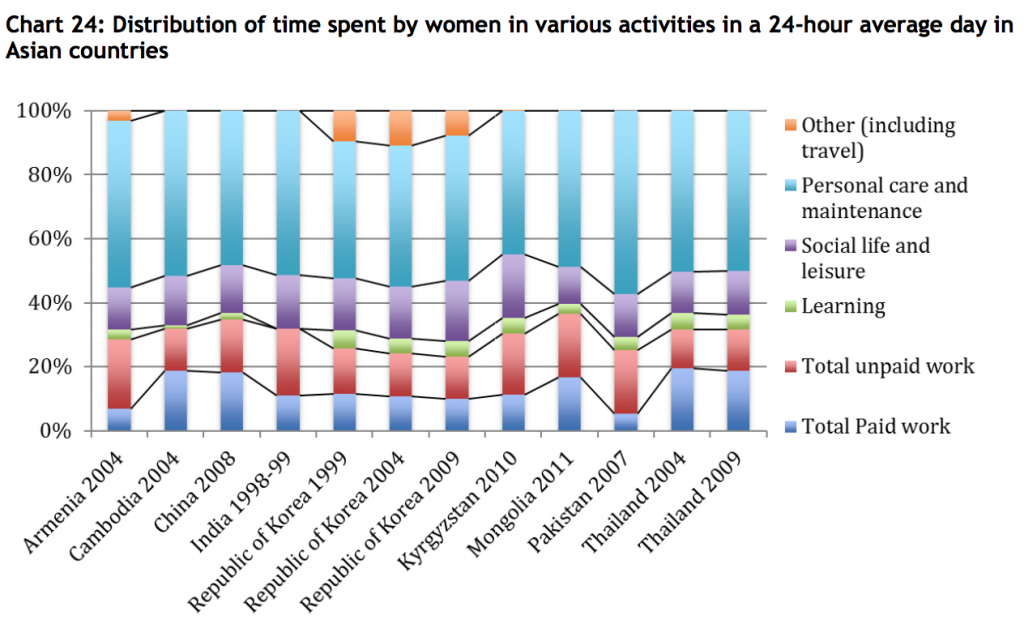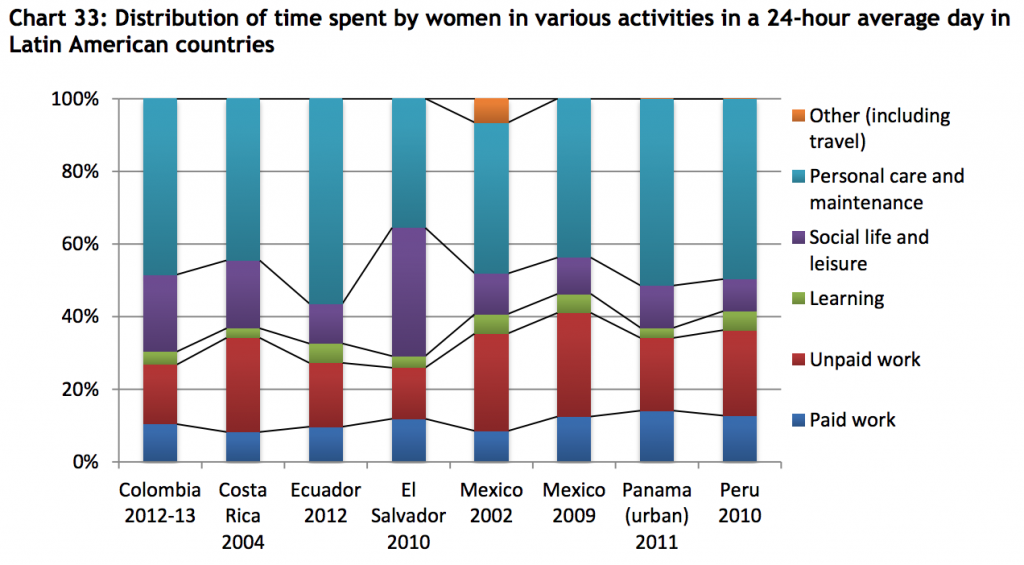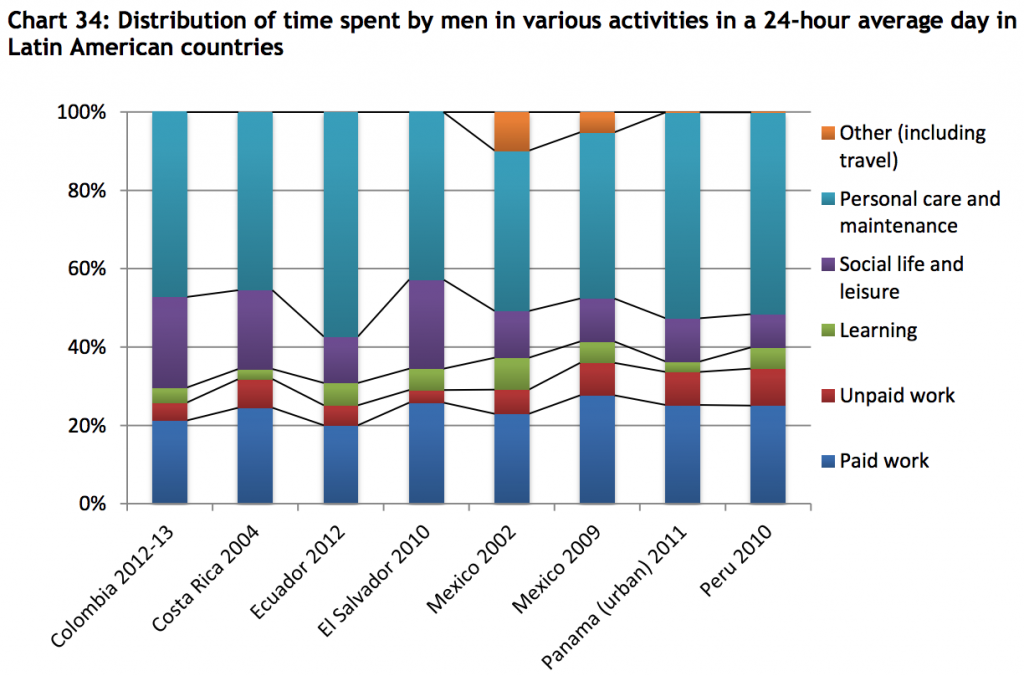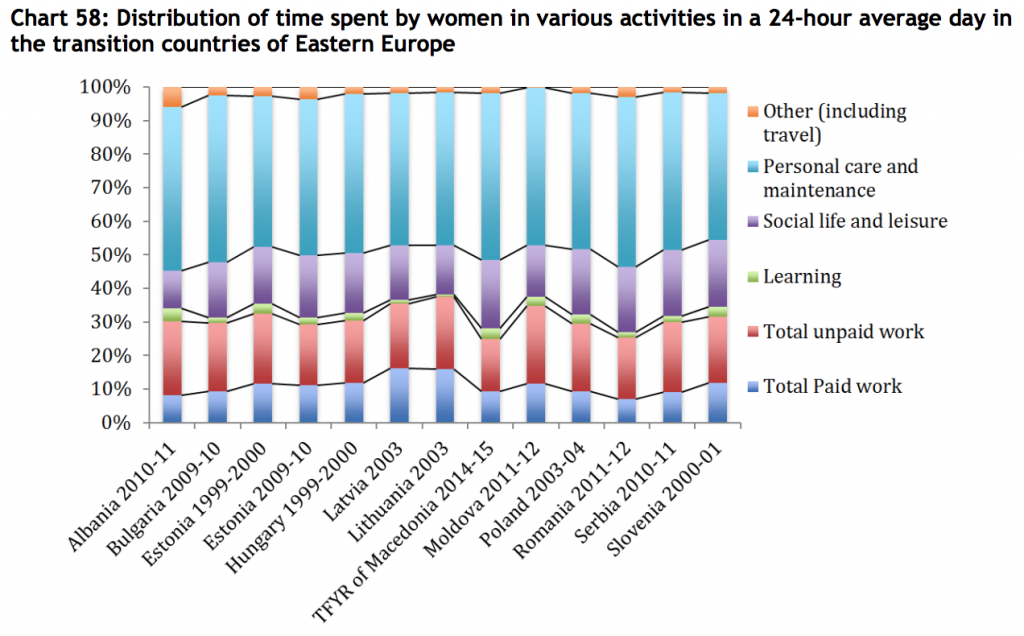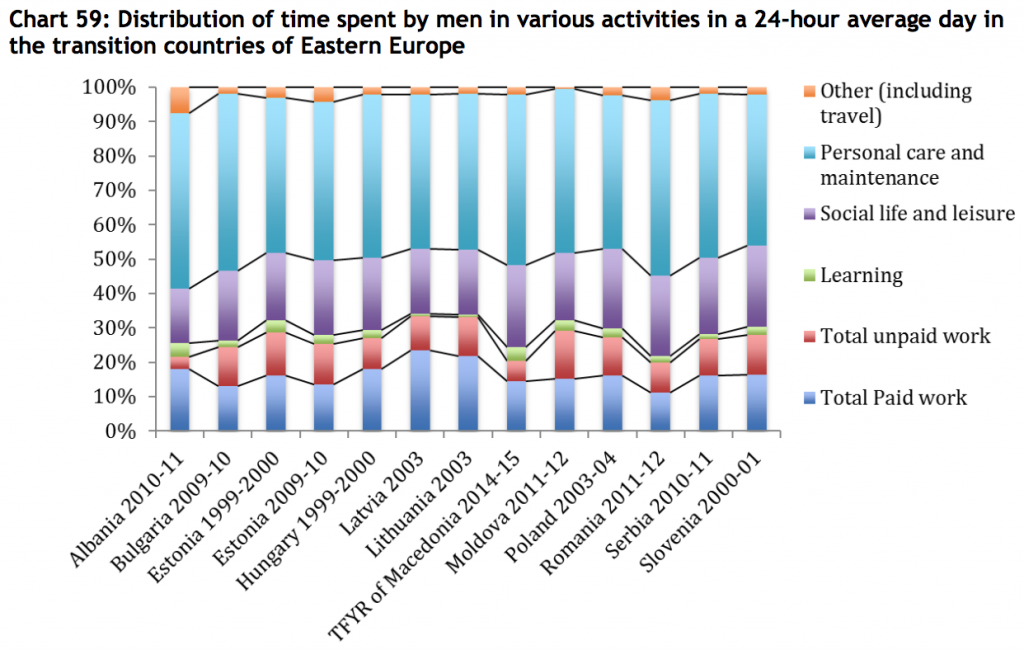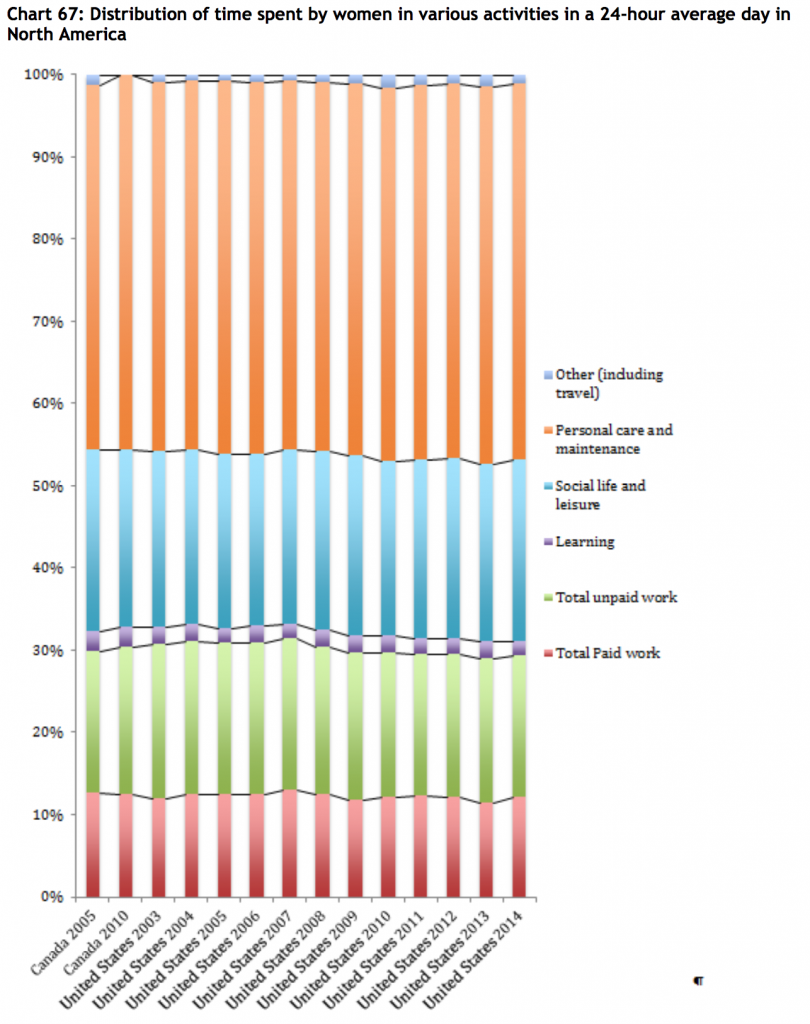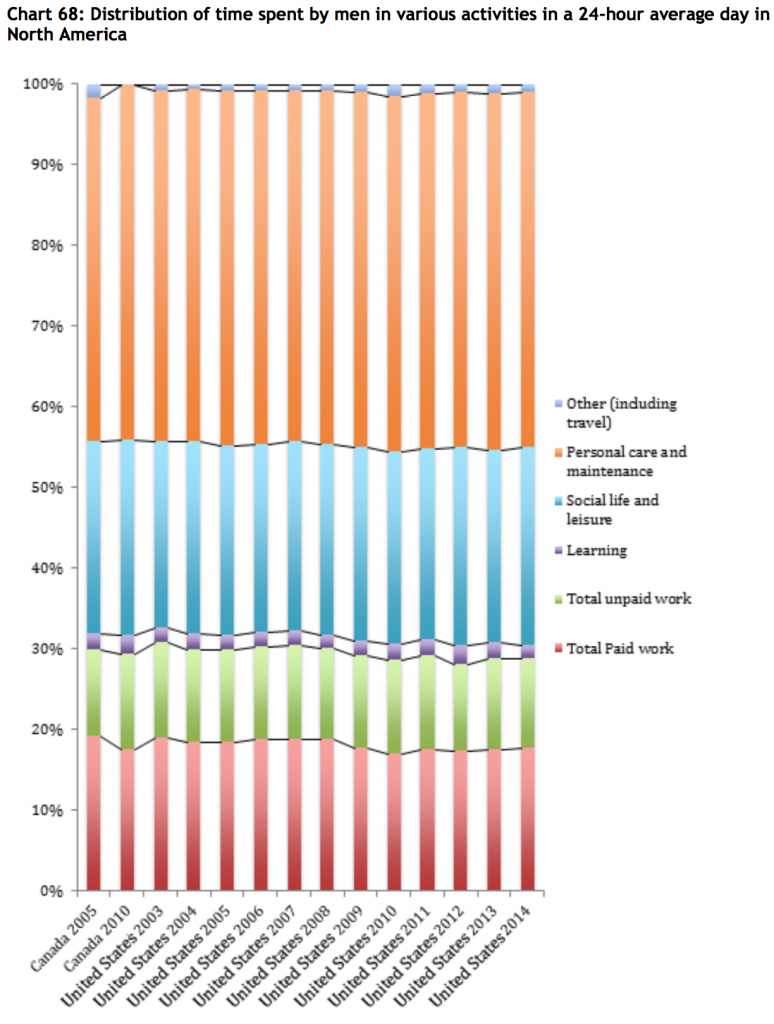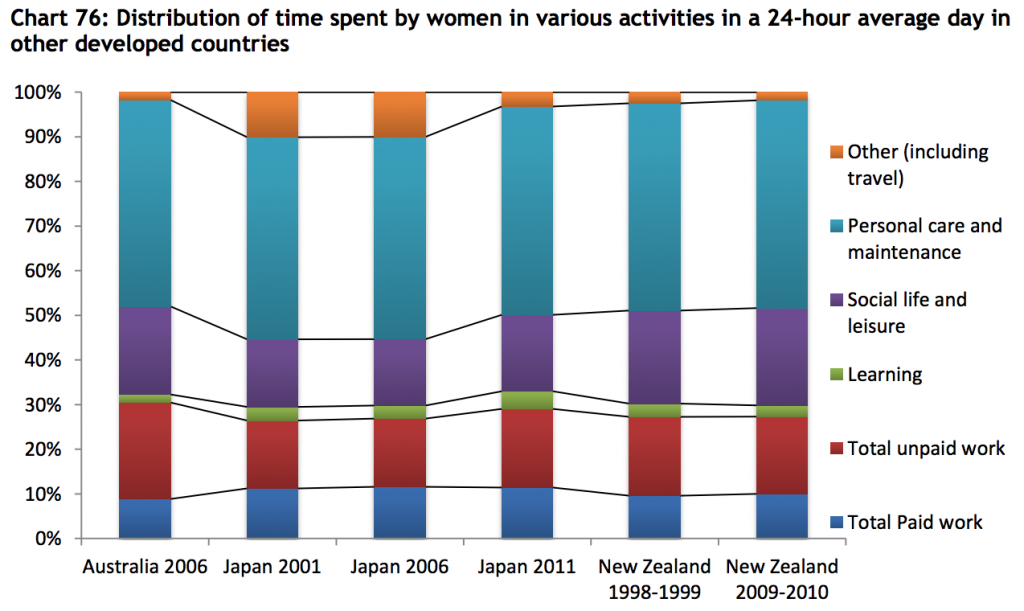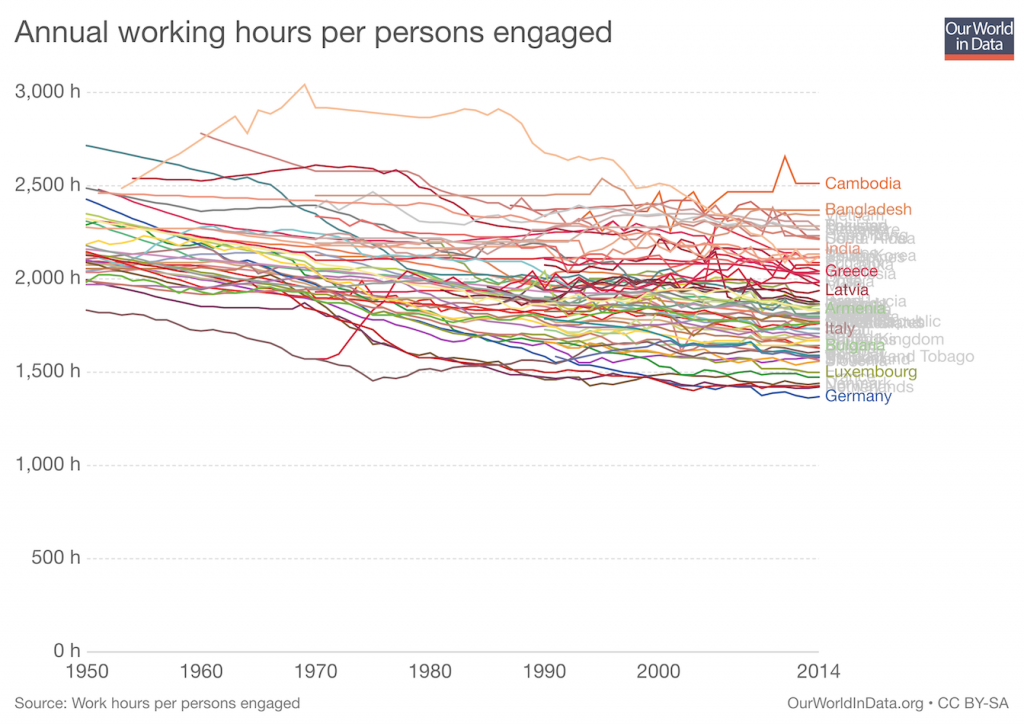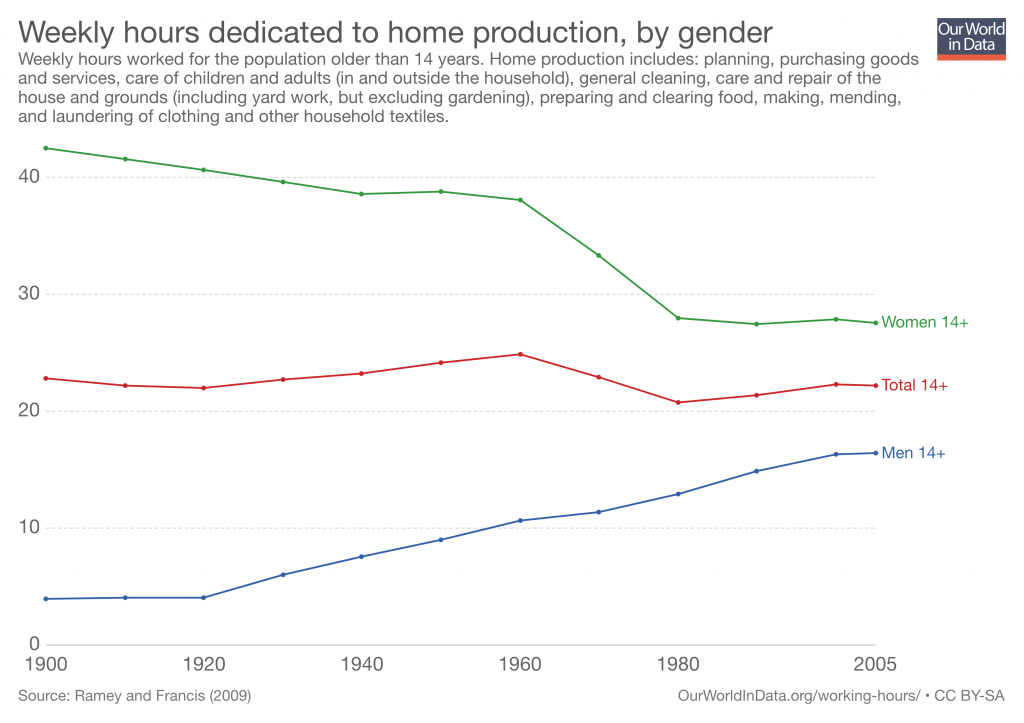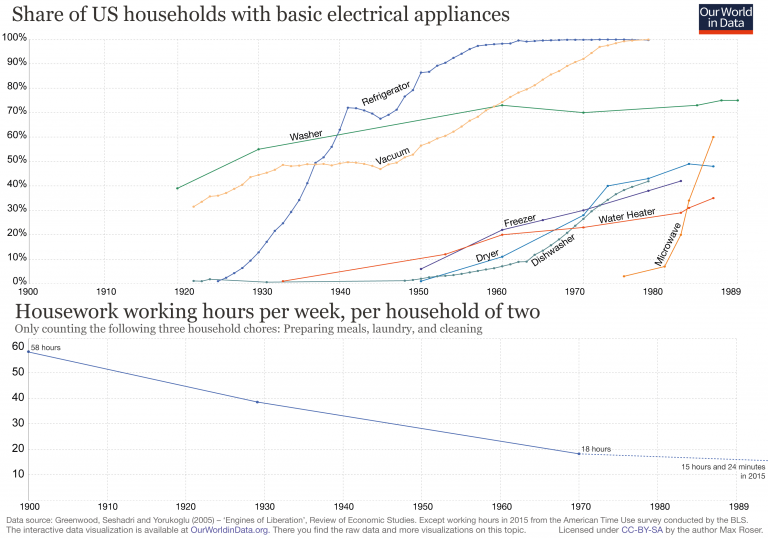Whole-Day Time Allotment
ASK: Historic trends in time allotment? Global data?
SUMMARY
The Bureau of Labor Statistics has conducted the American Time Use Survey (ATUS) annually since 2003. This is the first federally funded, rigorous time use survey, although other large scale surveys have been conducted in the mid 20th century. Smaller scale time-use diaries were also collected going back to the early 19th century. Much of this data is US-specific, but the UN has aggregated time-use surveys into regional categories.
FINDINGS
Wall Street Journal, in 2016, created some nice, interactive graphics illustrating the changes reflected in the ATUS from 2003 through 2015.
[Click for larger. Visit source for interactive version]
Excerpt:
Americans overall are working less and sleeping more than they were a decade ago, trends that point to an aging population and fewer people in the workforce. But among those who have a job, people are working more. And in general, men spend more time than women on leisure activities, while women sleep about a half-hour more each day.
Additional charts at WSJ show breakdown by sex, employment status, age, and whether children are in the home.
src:
Wall Street Journal, June 2016
“Changing Times: How Americans spend their day reflects a shifting economy and population.”
*
Here are links to the historic BLS time-use data
Data for 2003
See Tables 1 & 2 (pp.9, 10)
src:
BLS, Sep 2004
“Time-Use Survey— First Results Announced By BLS”
Historic tables all linked here
*
Diary data collection in the US dates back to the early part of the 19th century. The first large-scale national sample time use survey was conducted in 1965/1966. Data from this study, and others through 1981, are available via University of Michigan’s Institute for Social Research (ICPSR)
Americans’ Use of Time Series, ICPSR
*
Trends in earlier Americans’ Use of Time Project surveys, 1965-1995
src:
John Robinson, Geoffrey Godbey, 1997
Time for Life: The Surprising Ways Americans Use Their Time
Excerpts:
Distribution of Time in Productive Activities by Gender in Fourteen Countries
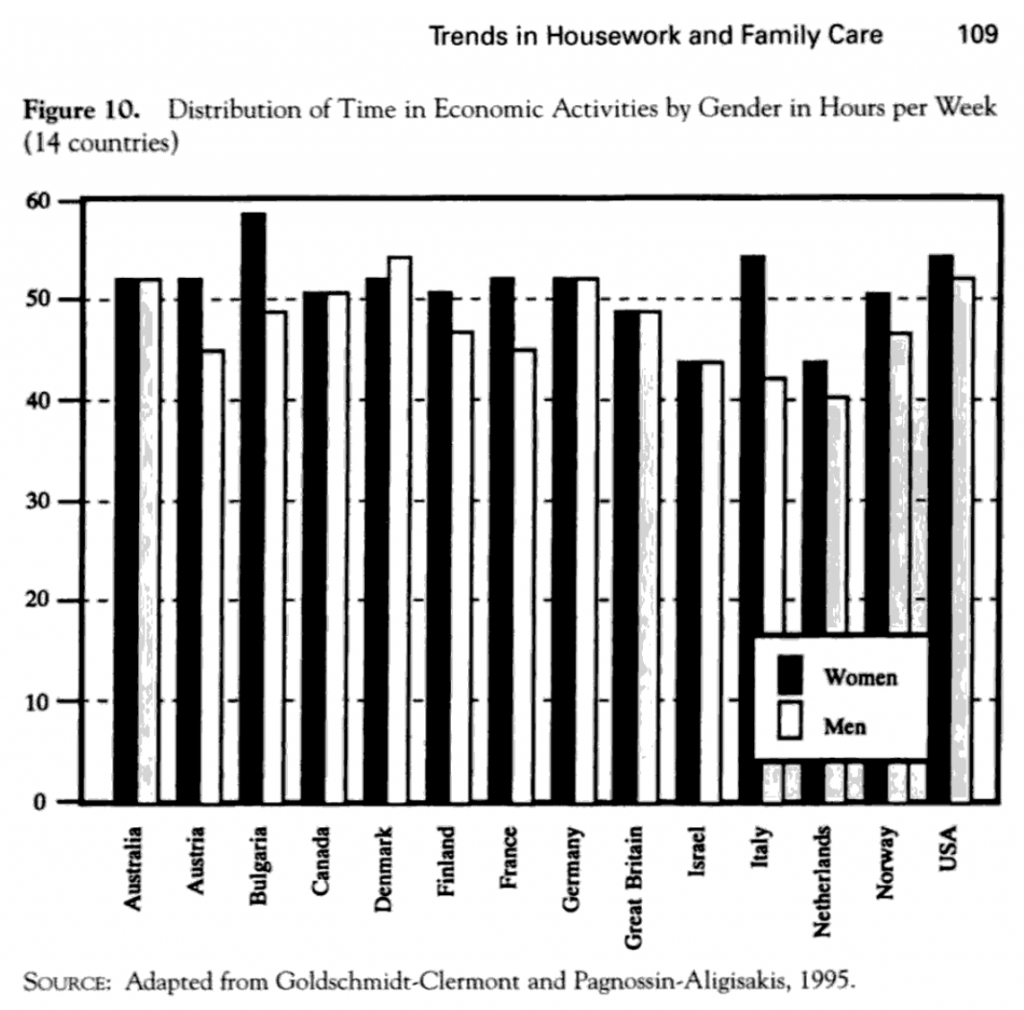
(p.109)
Trends in Free Time and Its Components, 1965-1995 (341)
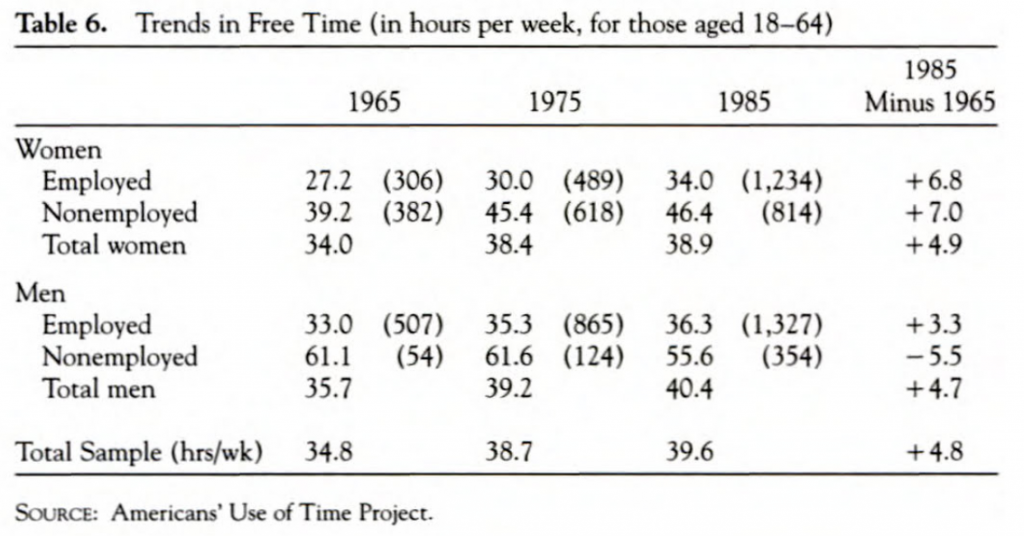
(p.126)
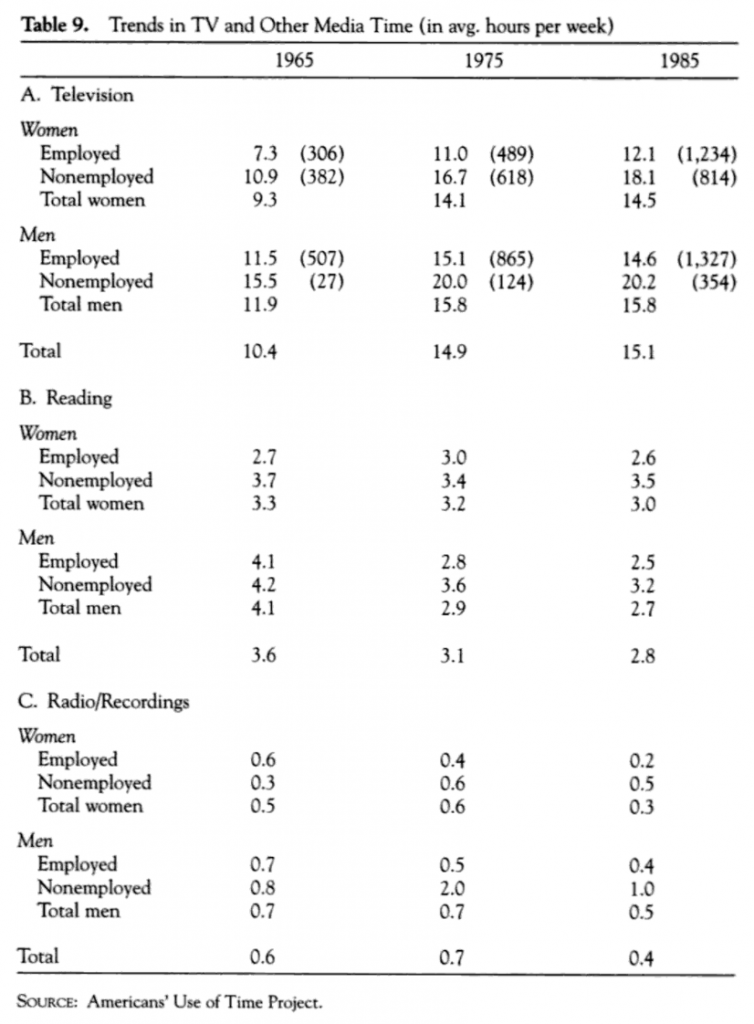
(p.145)

(p.170)
Trends in Different Types of Time for Women and Men, 1965-1995 (348)
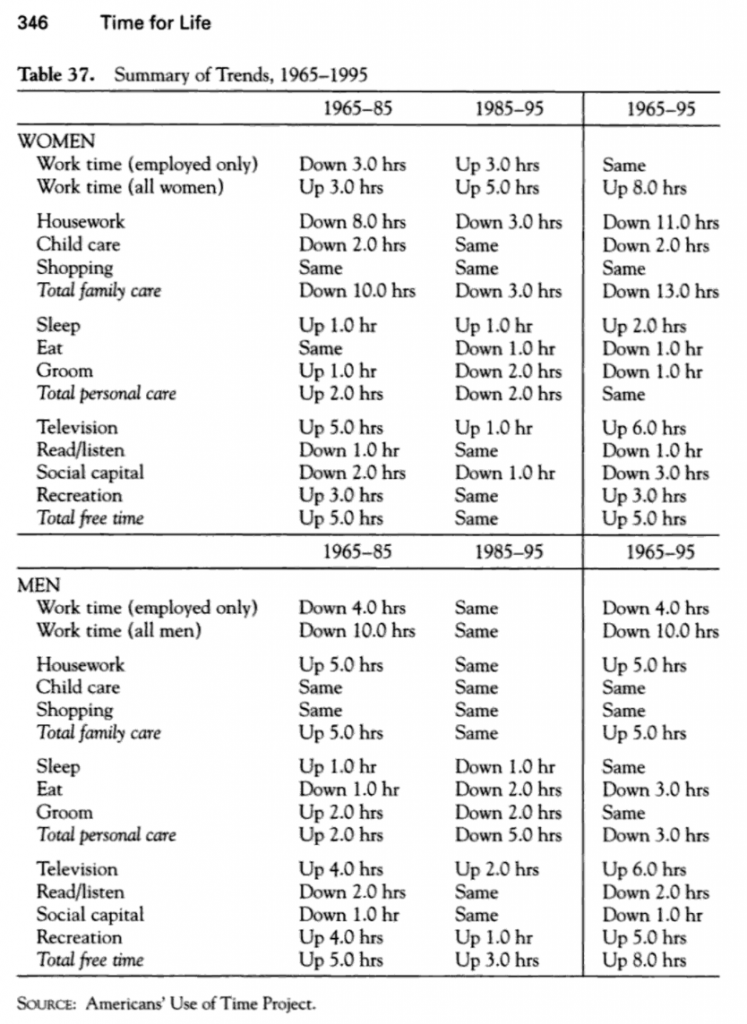
(p.346)
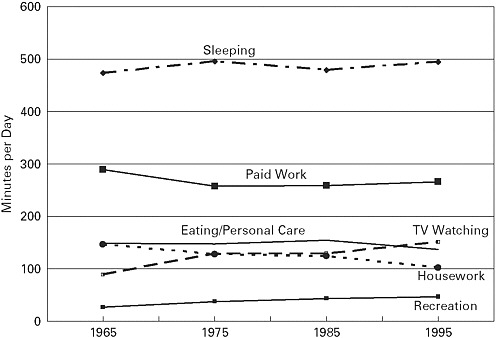
src:
Transportation Research Board and Institute of Medicine, 2005
“Does the Built Environment Influence Physical Activity?: Examining the Evidence — Special Report 282”
p.78, Figure 3-8 Time use, 1965–1995 (ages 18–64).
(data from Robinson & Godbey, above, although the preview of that info is not available in Google)
*
Global aggregation of time-use surveys
United Nations Development Programme, 2015
“Time Use Across the World: Findings of a World Compilation of Time Use Surveys”
Paper is based on 102 time use surveys carried out in 65 countries. It gathers as many time use survey data and metadata as possible, and builds synthetic indicators on time use across the world, based on this data set. One of the main goals of the paper is to highlight time-use differences between men and women, particularly the inequities between paid work and unpaid work. To that end, most of the charts are divided by gender, with only a single chart showing gender-neutral time-use averages (that one chart is for the Mid East and Northern Africa region). In the case of Europe, the charts are further segmented by west, north, and southern Europe.
Survey data are aggregated into the following broad regions:
Middle East and North Africa (9 countries, 10 surveys)
sub-Saharan Africa (8 countries, 10 surveys)
Asia (9 countries, 13 surveys)
Latin America (7 countries, 8 surveys)
Europe (15 countries, 29 surveys)
Transition [Eastern European countries with Soviet history] (12 countries, 12 surveys)
North America (2 countries, 14 surveys)
Other developed countries (3 countries, 6 surveys)
The following chart shows which countries are included in those categories, and highlights which countries have conducted repeated surveys.
Here are the overall time-use charts from the report:

p.66
See the report for western and southern Europe segments. I’ve excerpted the northern Europe segment because it reflects a broad time series, with many repeated surveys in Finland and Norway.
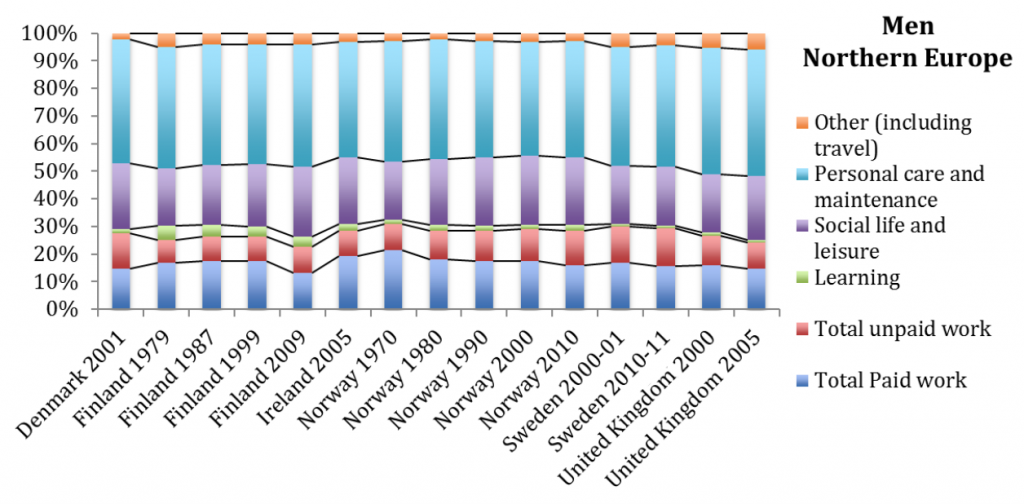
p.67
See the report for western and southern Europe segments.
***
Annual Working Hours 1950-2014
worldwide
Reflects the trend of people in richer countries working less.
Working Hours in the Household 1900-2005
US
Marked decline for women and increase for men, across all age groups.
Includes planning, purchasing goods and services, care of children and adults, general cleaning, care and repair of the house and ground, preparing and clearing food, making, mending, and laundering clothing and other household textiles.
Hours per week on chores have decreased as electrical appliances have proliferated 1900-1989
US
Comparing share of households with basic electrical appliances to hours spent preparing meals, doing laundry and cleaning.
src:
Max Roser, 2018
“Working Hours” – Our World In Data


